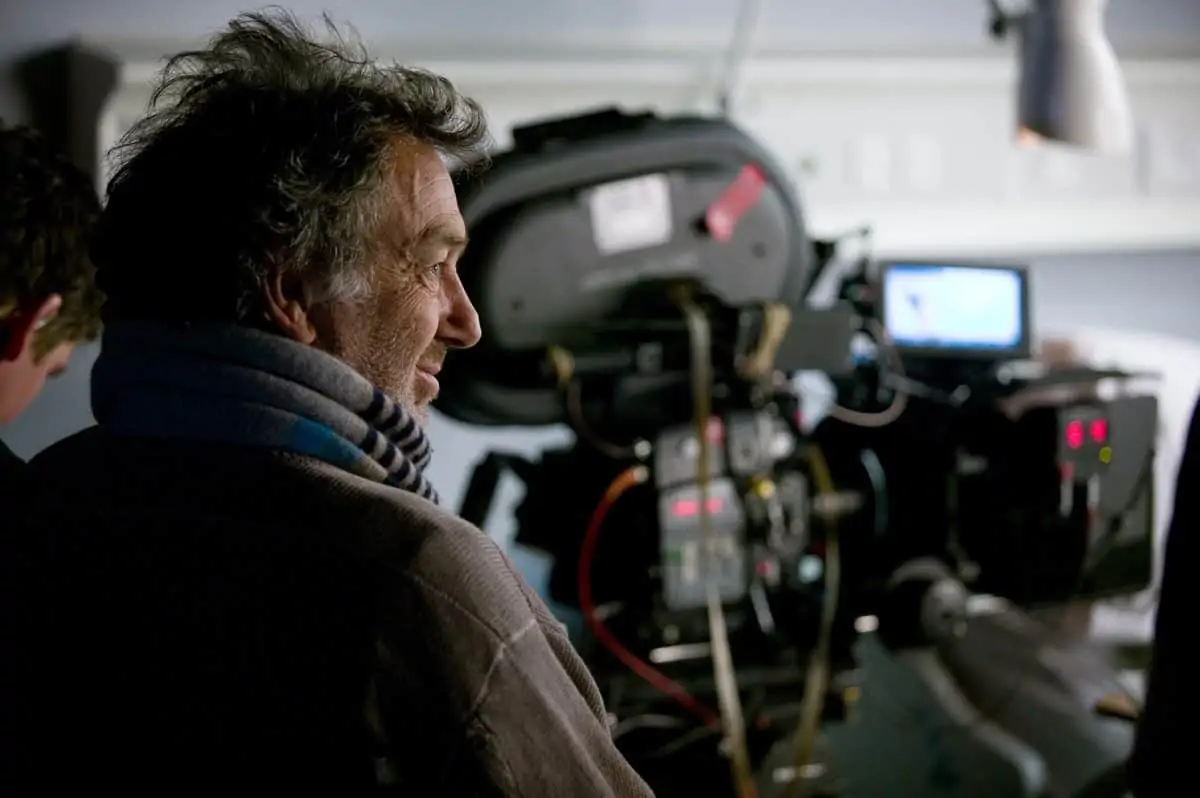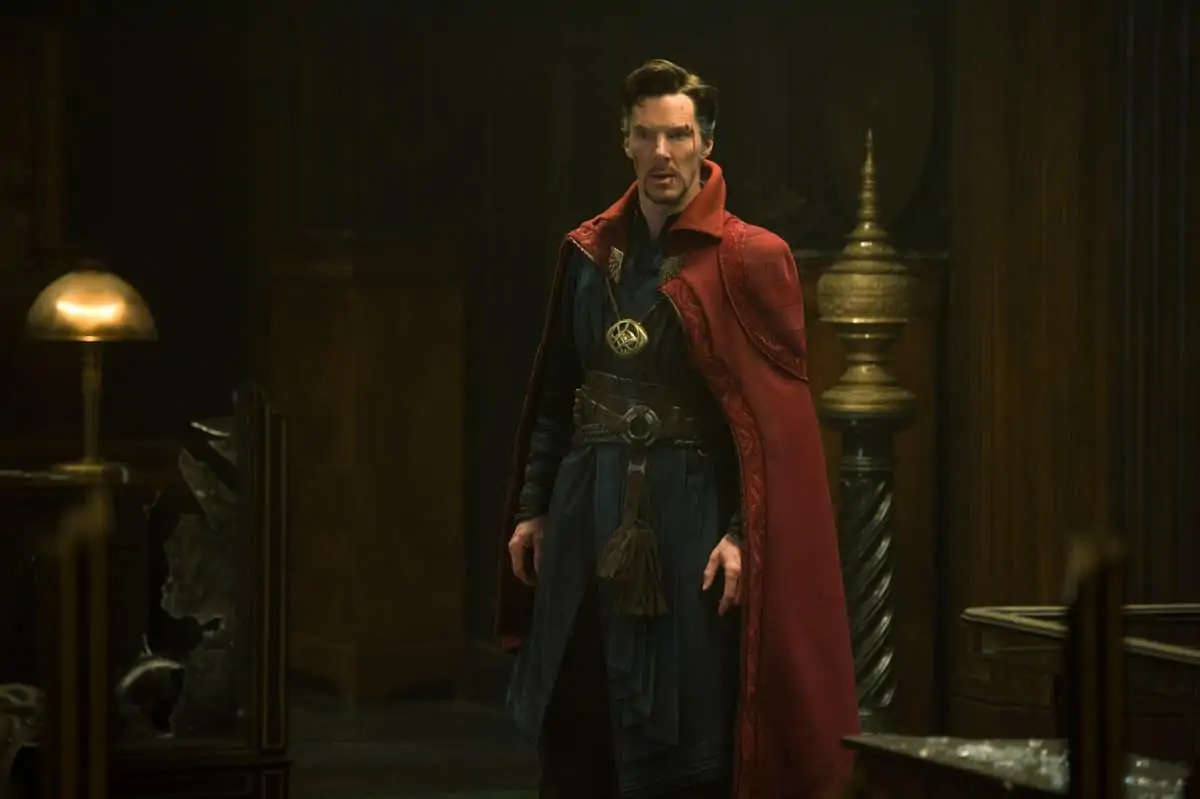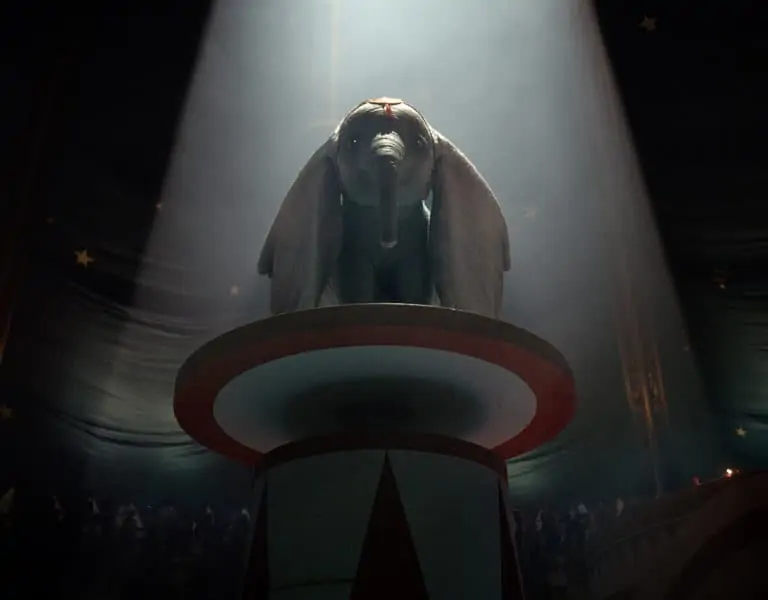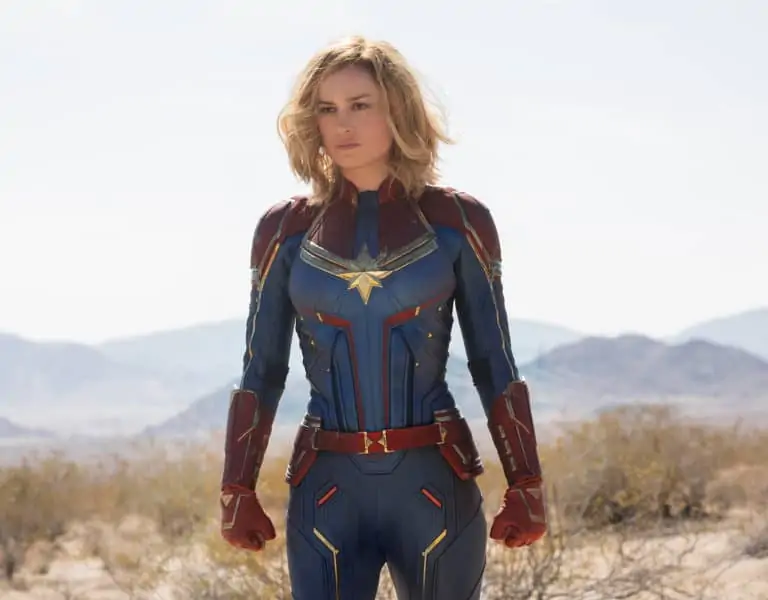FABLE OF FRIENDSHIP LOST
A commentary on friendship, the pain of rejection, and moving on, writer-director Martin McDonagh’s latest creation reunites Colin Farrell and Brendan Gleeson, the stars of McDonagh’s debut feature, In Bruges. Cinematographer Ben Davis BSC reveals how he lensed the tale of humour, heartbreak, and horror.
Before even setting eyes on the words on the page, cinematographer Ben Davis BSC knows he will want to be part of Martin McDonagh’s project each time the writer-director shares his latest script. “His writing is so brilliant. On this occasion, he sent the script a while ago because The Banshees of Inisherin was a long time in the preparation,” he says.
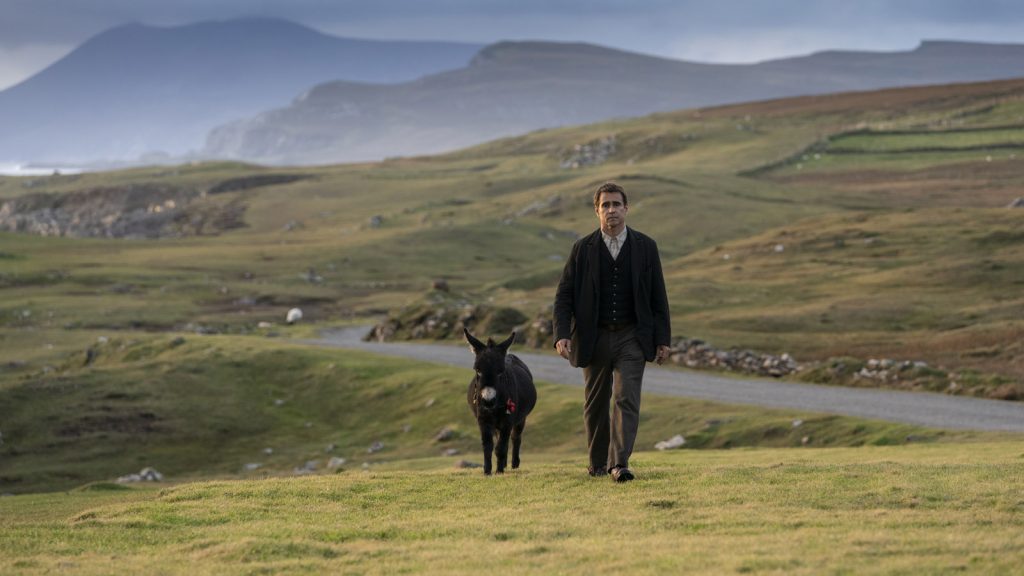
As with McDonagh’s previous work on screen and on stage, comedy exists alongside the melancholy. Set in 1923 in a claustrophobic community on a fictional remote island off the coast of Ireland, The Banshees of Inisherin revolves around the upset, confusion, and shocking incidents that occur after Colm (Brendan Gleeson) abruptly ends his relationship with lifelong friend Pádraic (Colin Farrell). When Colm expresses his desire to focus on writing folk music and enjoy his remaining years rather than listening to his friend drone on, the humour soon turns to tragedy as his mental state deteriorates along with the companionship.
“Audiences have different experiences of the film,” adds Davis. “And I think the fact some take away the humour and others take away the tragedy is a really interesting dynamic.”
The cinematographer – who has teamed up with McDonagh twice before, on Seven Psychopaths (2012) and Three Billboards Outside Ebbing, Missouri (2017) – compares a director to a conductor of an orchestra. “Once again Martin was conductor and was on top of everything, overseeing all parts of this production.”
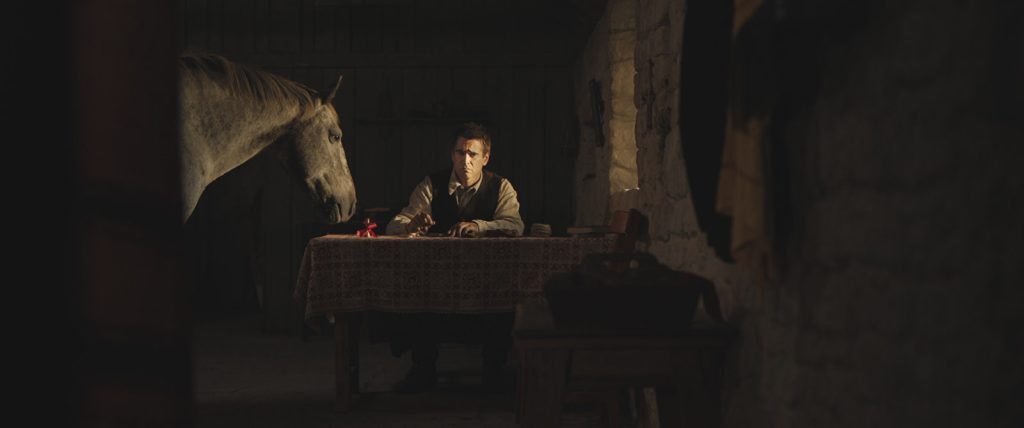
Prior to shooting, Davis, McDonagh, first assistant director Peter Kohn (Three Billboards, La La Land), and production designer Mark Tildesley (No Time to Die, Phantom Thread) spent 10 days of isolation in Galway to ensure they were COVID-free. “Martin brought his storyboards to the little house we were staying in together. The whole production was meticulously boarded and planned, as Martin’s films always are. A lot of love went into the film,” says Davis. “Those boards were simple line drawings but very much in his voice; they had this lyrical feeling and humour like his writing.”
McDonagh adds: “When I write a script it’s all about character and dialogue and situations. It’s not, at that stage, about images, so the storyboarding process is a major phase of the storytelling.”
A strong Western influence flowed through the storyboards – shots through doorways and windows which can be difficult to achieve when adopting a traditional approach. It was therefore clear early on that using exterior locations and interior studio builds would not be suitable for the film – “particularly as one significant plot point involves something being thrown at the front door”. A location that worked as both an interior and exterior would be required, despite the weather issues this could present.

During prep, references such as The Night of the Hunter (1955) (a film noir McDonagh often revisits), The Searchers (1956), The Assassination of Jesse James by the Coward Robert Ford (2007) and the low-angle, through-the-feet shots in Sergio Leone’s work were examined.
“Shooting through doorways and that kind of John Ford-ian trope was something we explored in the storyboarding phase,” recalls McDonagh. “The story lent itself to this idea of two almost lone gunmen falling out and getting into tiffs at the local saloon.”
Davis, who viewed the film as an old fable that required a slightly modern retelling, adds: “You often struggle to get time with a director so having them locked in a house for 10 days was a treat and allowed us to really nail down what the film would be.
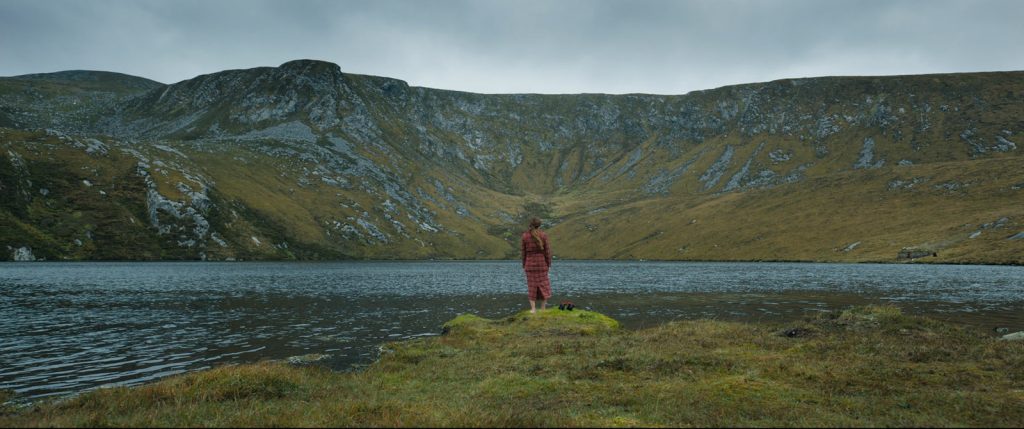
“But although we watched many movies in prep, you could never say any of Martin’s films are similar to anything. His work is so unique that it’s hard to compare. It’s difficult to find unique voices and that’s what I love about Martin’s films.”
After the 10 days of creative discovery, the group scouted the entire northwest coast of Ireland in early spring 2020, where they found the Aran Islands – three islands at the mouth of Galway Bay: Inishmore, the largest; Inishmaan the second largest; and Inisheer, the smallest – offered suitable locations for the three-week shoot.

The filmmakers searched for pockets of Inishmore free from modernity, tarmac on the road or telegraph poles. Tildesley, a newcomer to the region, enjoyed soaking up the ambience: “To live on the islands, people built walls from the rock. So, you have this patchwork quilt of tiny plots of land. You end up with this extraordinary, ancient pattern of rock walls, which in Martin’s script is written almost like a labyrinth – a maze in which these two characters live.”
Shooting was planned for summer, but when COVID returned and one of the actors had a commitment that could not be moved, filming was rescheduled to commence in September 2021. “It was difficult for Mark and I because other jobs came along, but we knew this film was very special and I have a long relationship with Martin, so we turned them away,” says Davis. A constant dialogue between the three followed about the build progression, with additional time now available to construct the sets, all built to specification by local craftsmen.
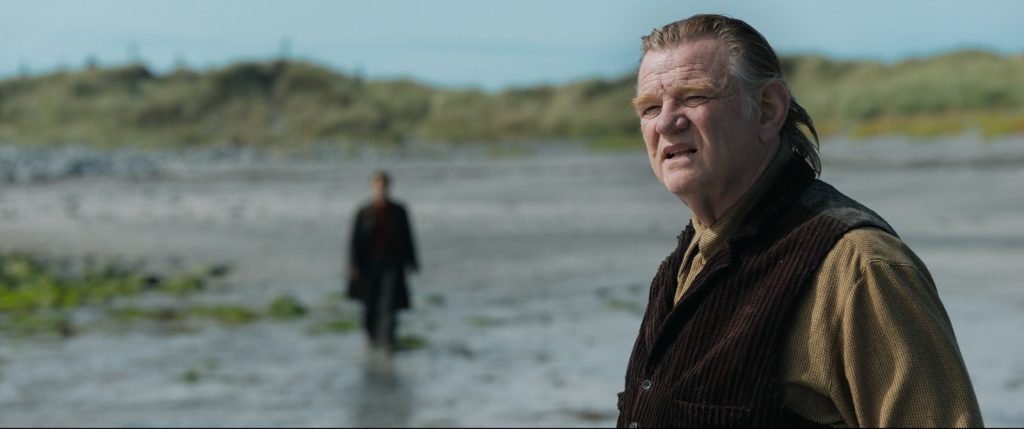
Dramatic beauty
McDonagh was adamant the visuals should not be dull and depressing and should avoid a view of Ireland dampened by rain and grey skies. Wanting to represent the Ireland he remembered from his childhood, the director shared John Heinde postcards, believing their saturated look could offer inspiration when creating a sense of colour and joy through the visuals.
“The kind of falsehood in those postcards wasn’t exactly what he wanted, but as the story has a certain amount of gravitas, he aimed to play the tragedy against the beauty of nature with the interiors needing to represent the claustrophobia of life on the island,” says Davis. “Martin wanted to remind us there’s another way of looking at the film in terms of colour.”
McDonagh wanted to “capture the beauty of Ireland and lean into that. The story is dark enough anyway, but we wanted the visuals and the locations to be as cinematic as possible.” The first port of call was Inishmore, “a very special and unique place. When we arrived, it was raining but it still had this incredible dramatic beauty,” adds Davis. “Nobody lives on the Atlantic coastline though because it’s too harsh an environment. We decided wide shots should convey the isolation of the location.”
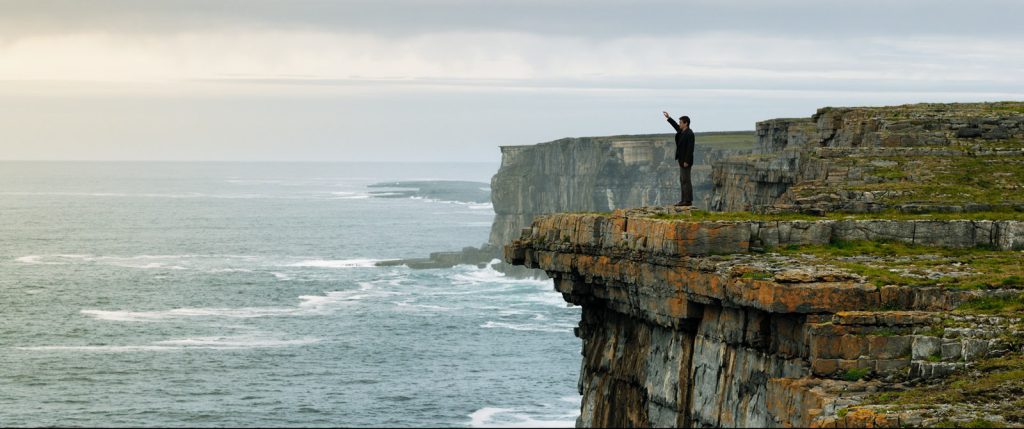
Upon arrival, it was apparent very little existed from the period the story is set, and it would be necessary to construct exterior and interior locations. The pub was built on Achill Island; Pádraic’s house – a complete exterior interior – was purpose-built in an area called Gort Na gCapall on Inishmore; and an old fisherman’s cottage in the bay of Achill was converted into Colm’s house.
Building Pádraic’s home as a set allowed McDonagh to “shoot through windows and see the ocean, the coast road, the fields and the island”. Tildesley designed Pádraic’s house to be simpler than Colm’s. “When you get into Colm’s house, the inside is almost like a Van Gogh painting,” he says. “It’s yellow, bright. It has a red floor, which is an old oilskin from a sailcloth, and a black ceiling. These are strong colours for a period film.”
The production taught Davis that “when making a location film, if you can build your sets, interior and exterior, as one piece, it opens up so many visual opportunities.” He, Tildesley, and McDonagh discussed each location in detail, especially the pub which they agreed should have a “dark, almost black oily ceiling and dark green walls contrasting with the reflections in the windows”.
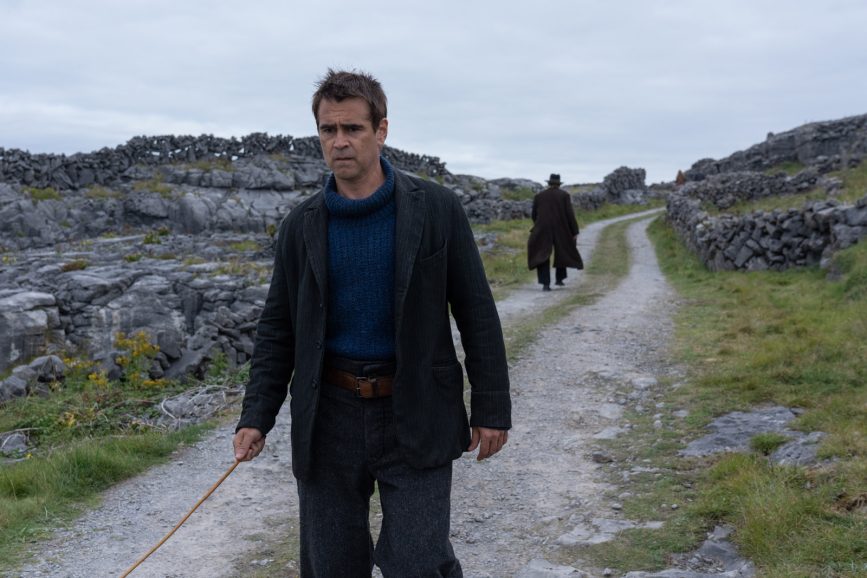
Endeavouring to lift the characters out of the darkness, the cinematographer referred to Dutch 17th– century paintings from artists such as Rembrandt and Bruegel and examined the way they created pockets of light using sources such as candles and oil lamps, which also feature in the film.
“I wanted to create painterly portraits within the pub location. But if you put an oil lamp in the middle of a table, or hanging above a group of people, and you expect it to do the work you’ll be very disappointed. You must light as if it’s coming from one particular source,” he explains. “In the design of the set, there were large rafters across the ceiling to allow me to hide lights behind them. So, if Colm was playing the fiddle at a table with a group of musicians sat around it, each person had their own key light. It’s hard work and time consuming, but enjoyable and successful if you position the lights in the right place.”
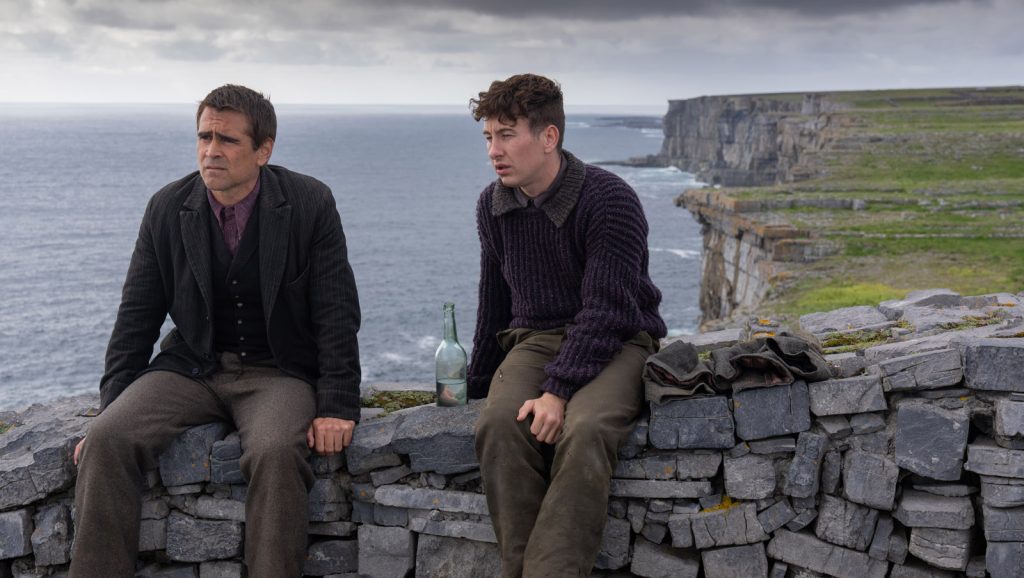
After watching a variety of Westerns, it was decided that a large, long bar was essential for the pub. “When these two characters fall out, one goes to one part of the pub. The other goes to the other and it’s a stand-off,” says Tildesley. “We wanted to create a space that was simple but told the story. There’s a sense of warring and oppression and difficulty, so we built a heavy ceiling in the pub that is analogous to the impending doom.”
Davis and Tildesley also discussed the many shots incorporating or shot through windows. As Victorian windows tend to be thin at the top with a rippling effect lower down, Tildesley sourced old glass sheets for the windows which would create authentic distortion. One window-centric scene which stands out to Davis sees Colm talking to his new friend at the pub as, through the window, Pádraic is seen walking away and looking back.
“It’s just a beautiful image and that was from one of Martin’s storyboards. The boards dictated so much of the film,” he says. “There’s also a very Western and The Searchers-inspired shot at the beginning of the film which features the doorway at the front of the house and the door we had built at the back, allowing you to shoot through the house. The shot cranes up and over, so you see Pádraic’s sister Siobhán hanging the laundry.”
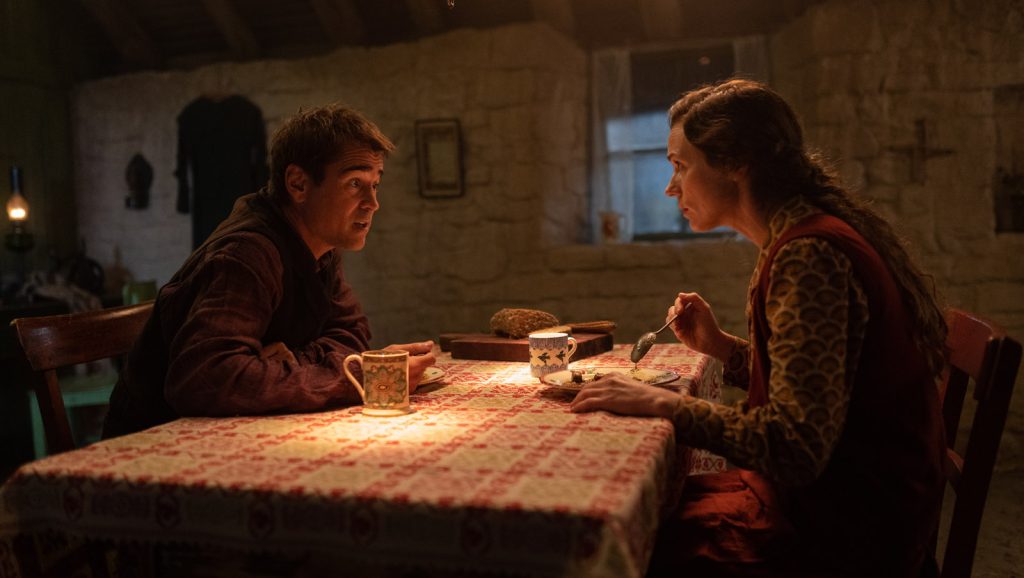
Colour was key in that scene, as it was throughout, with Andrew Wyeth paintings referred to for inspiration when selecting the splashes of colour for the clothes hanging on the washing line and Siobhán’s outfit.
“It’s hard to add colour into those kinds of environments when you’re working a lot with green grass and grey walls,” admits Davis. “Costume designer Eimer Ní Mhaoldomhnaigh was fantastic and one way we injected colour was through elements within the scene such as costumes and production design.”
Davis worked with one LUT and visited the glamping pod dailies colourist Darren Rae was based in throughout the shoot to check the dailies. Much of Rae’s work flowed through to the final grade “which was expertly handled by Adam Glasman at Goldcrest”.
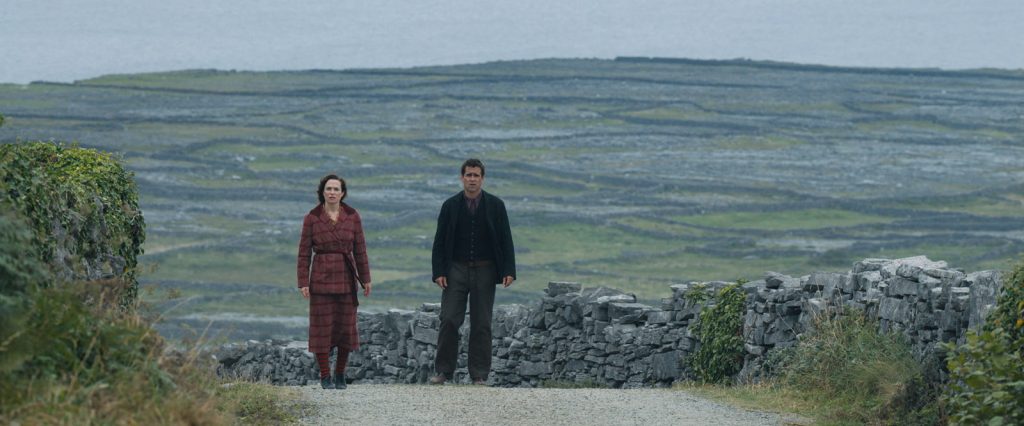
Around prep and shooting, Davis spent time sitting in locations in Inishmore trying to determine how he wanted to photograph them. “It’s incredibly beautiful – sometimes you’re surrounded by a raging ocean, sometimes a placid ocean. I had a camera and tripod in the back of my car, so during production, before or after call, sometimes at five in the morning, I’d photograph the island. Every sunset, every dawn, and every time you saw the ocean it was different – it just kept giving.”
When Kohn, McDonagh, and Davis read the script in prep, they decided the type of weather they wanted for each scene. “For example, when Siobhán leaves the island, it was important it was a sunny morning to represent where she’s heading. We wanted the opening sequence to be in glorious sunshine until the moment Colm says to Pádraic, ‘I just don’t like you no more.’” says Davis.

Shooting on the small island offered the advantage of all locations being in close proximity, so rather than the crew spending time in an office or on Zoom calls exploring the best approach, they had discussions in the locations while going through storyboards, examining the light and determining how to shoot as they responded to each environment.
“While having all our cast sort of imprisoned on the island was beneficial, it was difficult to move anything around the island as the roads were so narrow, meaning we had a very small footprint, small crew and minimal camera and lighting package,” says Davis.
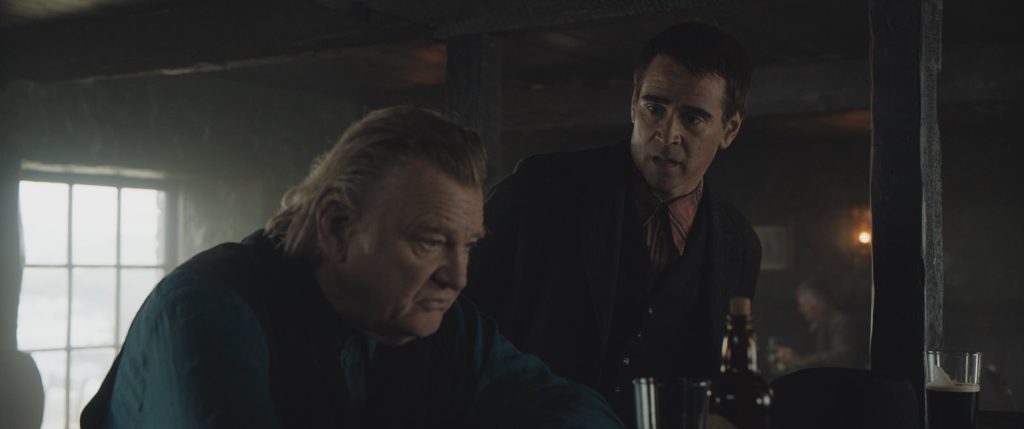
Windows to the soul
When crafting the visuals much of the focus was placed on the inner workings of the two protagonists and, having previously collaborated with McDonagh, Davis knew close-ups would be of great importance. “We spent a lot of time discussing that as he was really trying to penetrate using close-ups,” says Davis. “One of the characters is an open book while the other is closed off, so we talked about how I would light the close-ups, and whether we wanted access to particularly, for instance, Colm’s character. In the beginning, you don’t fully understand the man or his motivation for ending his friendship with Pádraic.”
Davis was mindful about camera placement as the story unfolds, ensuring the camera was not too close to Colm. Later in the film, the shots become wider and closer to him, particularly in the confessional church scenes where the audience’s view is as close as possible, and eye light was key.
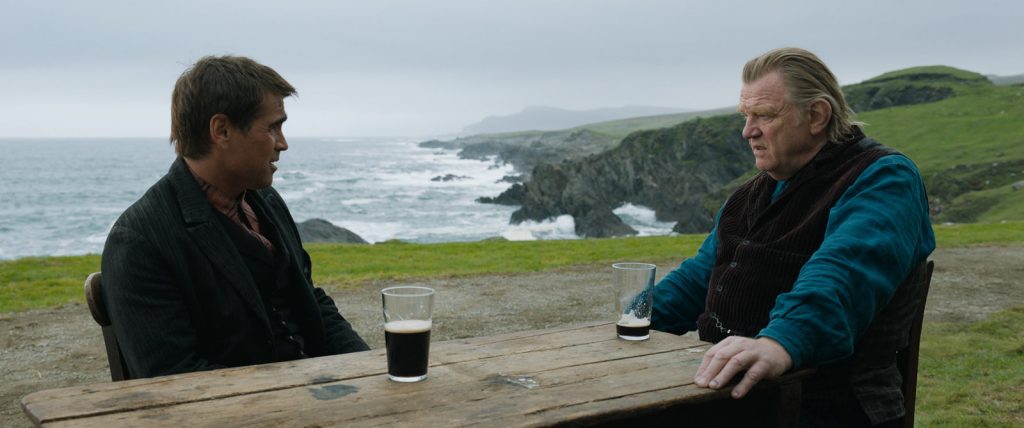
“The most important light in any close-up is the eye light which can be achieved in many ways. If you put up a big, soft source, you get a large eye light, which is watery, and sorrowful. A barrier can be created between the character and access is stopped when the reflection in the eyes becomes very wide,” he explains. “But if you put a pinprick of light in the eye, you gain access to the character. They say the eyes are the windows to the soul. Sometimes I didn’t give Colm an eye light because, especially at the beginning, we wanted the audience to ask what was going on with this character.”
Cutting seamlessly between wide landscape shots and close-ups was essential, with the close-ups needing a certain texture and modelling. “I didn’t want a very shallow depth of field where things fall off which wasn’t appropriate. I wanted the eyes and the ears to be sharp, and to have a depth of field that would allow the audience to feel the texture in the faces. When you cut from a landscape to a close-up, it had to feel like it was the same sequence rather than jumping out at you.”
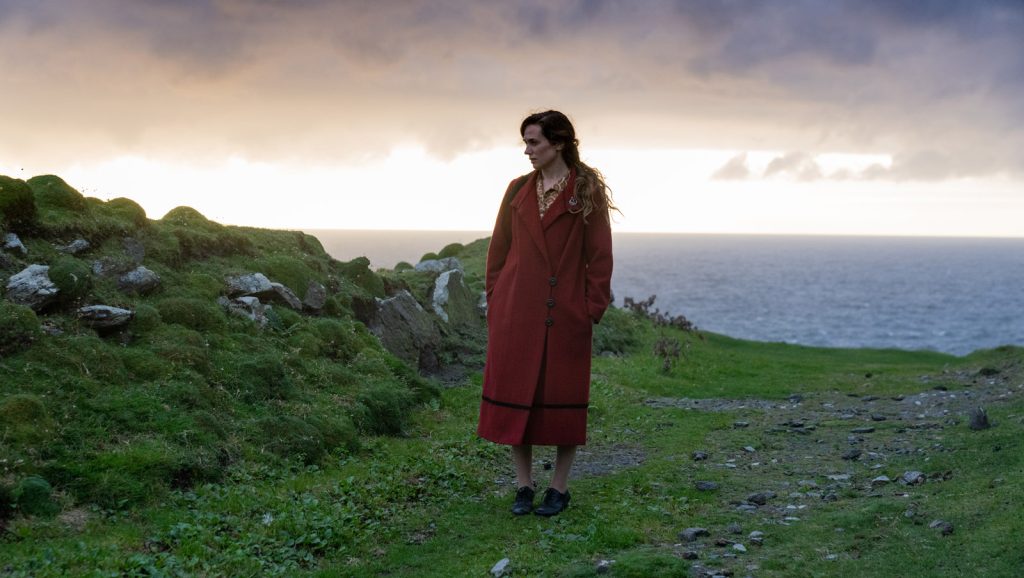
This affected the lens choice and saw Davis work with ARRI Signature Primes – supplied with the camera by ARRI London – because “they’re incredibly correct across the frame”. While some anamorphic and vintage lenses vignette so everything on the outside of the frame falls off, Davis did want to adopt that visual approach. “The lenses needed a flat look which the Signature Primes offered as well as working well when pointed directly into a light source,” he adds. “For the landscape shots, I knew I’d be pointing into the sun if it was there. And for the interiors, I’d be pointing into the oil lamps or candles. I didn’t want them to halate and fall apart; they needed to photograph correctly.”
Shooting on film was considered and some test sequences were captured in this way, mainly as a reference point. However, as it was important for Davis to see the rushes as soon as possible the decision was made to shoot digitally on the ARRI Alexa Mini LF – a camera which Davis “understands” and his “eye is calibrated to”. He elaborates: “When shooting performance, Martin likes to keep the camera running and get the actors into a rhythm where they almost forget they’re reading a line, and they can try different approaches. It’s a very hypnotic process. And we felt we couldn’t do that shooting on film.
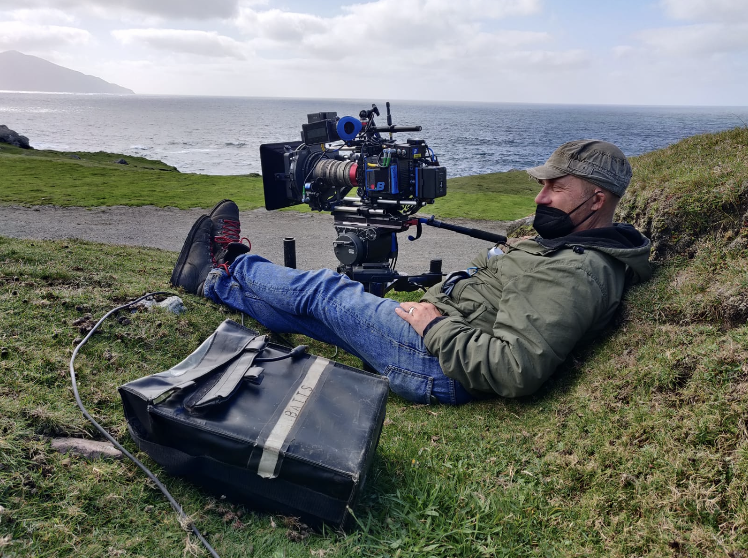
“Instead, we shot digitally and then did a scan to film negative during the post-production process and then back to film, to give it texture and halate the highlights slightly. The process is not cheap. It’s hard to describe what it does, but the way I sold it to the execs was that it’s like the difference between listening to an album on vinyl or one that’s been digitally remastered on a CD.”
Many scenes were captured with two cameras, with camera operator Des Whelan operating A camera while Davis was on B camera, working in close collaboration with focus puller Tim Morris. As there are a number of walk and talk shots, the team discussed whether Steadicam might be necessary but ultimately decided against it. Instead, they used the DJI Ronin to capture scenes demanding more movement as characters in conversation walked up and down lanes, which were once again determined by the movement in McDonagh’s storyboards.
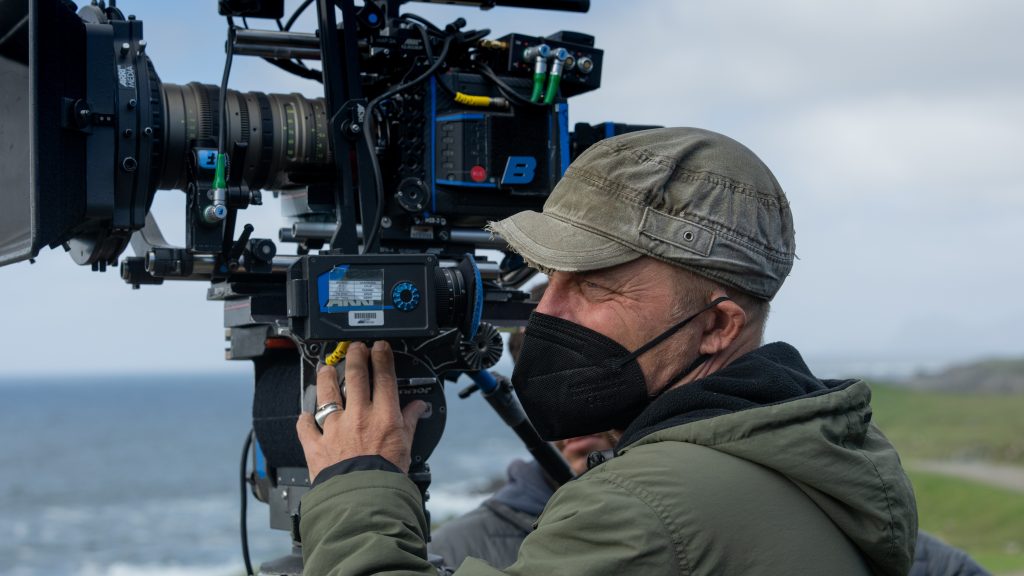
Painting with light
Budget constraints dictated that lighting was “largely analogue” with few digital light sources, LED fixtures, and dimmer boards. “Most of the lighting was incandescent because most of the interiors were flame lit. For me an incandescent lamp is always a better way to deliver a flame. For the twilight shot of the burning house, which was partly going to be created through visual effects, we rigged the roof with six Mini Brutes because I felt they create the nicest flame effect.”
Davis enjoyed adopting an analogue approach similar to the way in which he worked when first starting to shoot on film. “You can get overwhelmed with technology and put up lots of lamps all going back to dimmers when working on big stages, so you have total control of everything,” he says. “It was so nice to go back to the way I used to work – every light had a purpose and a reason to be there. I had an excellent electrical team. It was hard work for them as there was a lot of exterior work and poor weather conditions to contend with.”
To illuminate interiors in a way that would make them look real, Davis and gaffer Onx Narang followed the methodology that if the light source was near the camera or near the subject being filming, it would always be a real flame. When the light was further away in the background, they used electric fixtures to simulate flames. “To make those work, you must use a lot of light, and paint each frame individually,” says Davis. “That’s hard work for an electrical department, but it’s rewarding when you get there.”
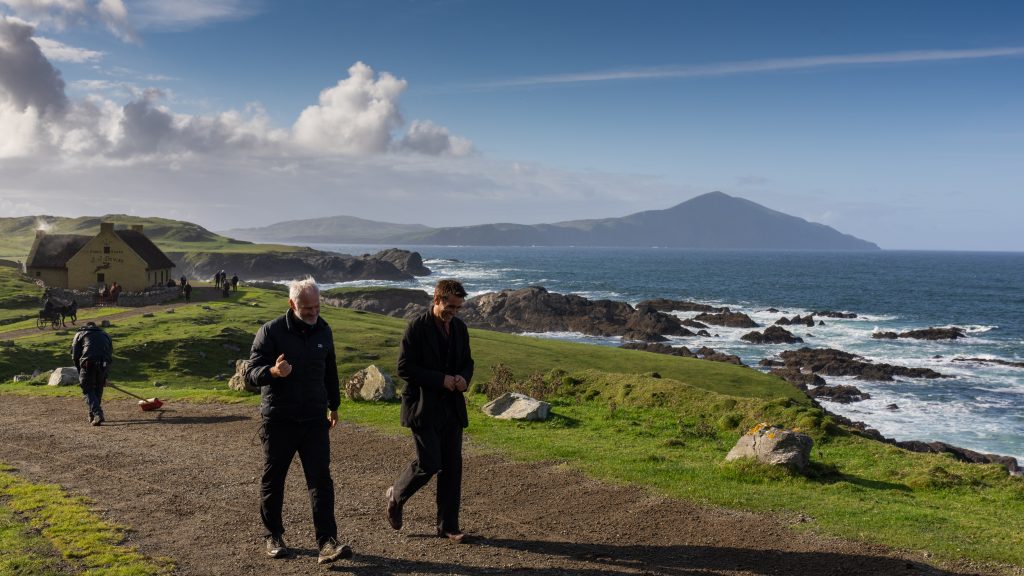
A night-time scene featuring local lad Dominic and Pádraic sat drinking poitín was particularly demanding partly due to its location in a port on the Atlantic coast. “I couldn’t get any height with any lamp, and I had no cherry pickers. The highest I could get the lamp was on a tower which was tough because the wind was blowing off the ocean, meaning you also couldn’t put any large textiles up. So, we had to create the moonlight with a hard source using HMIs,” says Davis.
“It’s difficult for a DP when you read in a script, ‘They sit out by the edge of the sea in the moonlight,’ because ideally you want the moonlight out in the ocean as that’s the way you’re going to look. What are you going to do? Put a great big crane on a boat out in the ocean? Probably not because the ocean can be way too volatile.”
Natural light was also a valuable creative tool, as it was when Davis lensed McDonagh’s Three Billboards Outside Ebbing, Missouri. Believing scenes captured at twilight and dawn have a different emotional feeling, the cinematographer was keen to shoot a pivotal scene in that film at the end of the day which sees Frances McDormand (Mildred) talking to a deer. “That can be tough as you only have a limited time to capture the scene, but Frances is such a professional there was no way she was going to need to go again and again.”

Upon receiving the script for McDonagh’s next creation, Banshees, Davis was delighted to discover the idea was being embraced again and many of the scenes were set at dawn or dusk. “For a DP, that’s perfect as we would shoot almost everything at magic hour if we could. When working with Chloé Zhao on Eternals, she wanted to shoot a lot at magic hour. I learned so much from her about how you make that work, how you set your cameras up and get ready for that knowing you’re going to shoot an entire sequence in 30 minutes. She’s a very brave director.”
McDonagh adds: “Summer in Ireland is usually quite rainy and dour but when we shot it was beautiful. It was majestic. The sunsets and the skies were fantastic and lent themselves to a beautiful piece.”
While the film is packed with standout performances – seeing Farrell and Gleeson reunite on screen following their In Bruges pairing – Banshees also includes an assortment of four-legged stars such as Pádraic’s beloved companion, Jenny the donkey. “Before we started, I thought filming the animals was going to be difficult, but it was actually a fantastic experience,” says Davis. “We had an excellent animal handler and Jenny was really well trained. But my favourite animal was Minnie the horse who was originally just going to pull the cart but came along and stole the show.”

While shooting the landscape shots, Davis “realised pretty quickly that if I wanted them to be in the film, they usually had to feature an animal”. One of his favourite shots is animal-related and shines a light on two furry friends. “I was heading off to film some footage of the landscapes and Martin joined me because there were a couple of goats he wanted to photograph. We had to climb over all these little walls to find the goats which we then shot at sunset.
“Inishmore in particular was full of animals. Everyone seems to have some, usually in pairs because it’s a lonely place for them too. There’s just something about those two goats, the way they look at the camera – they’re kind of a mirror of the film. They represent Colm and Pádraic before the break. Whenever I saw them, they were right next to each other. So, imagine the upset when one of them doesn’t want to hang out with the other anymore. Martin doesn’t do backstory, but if you wanted one just look at the goats.”

